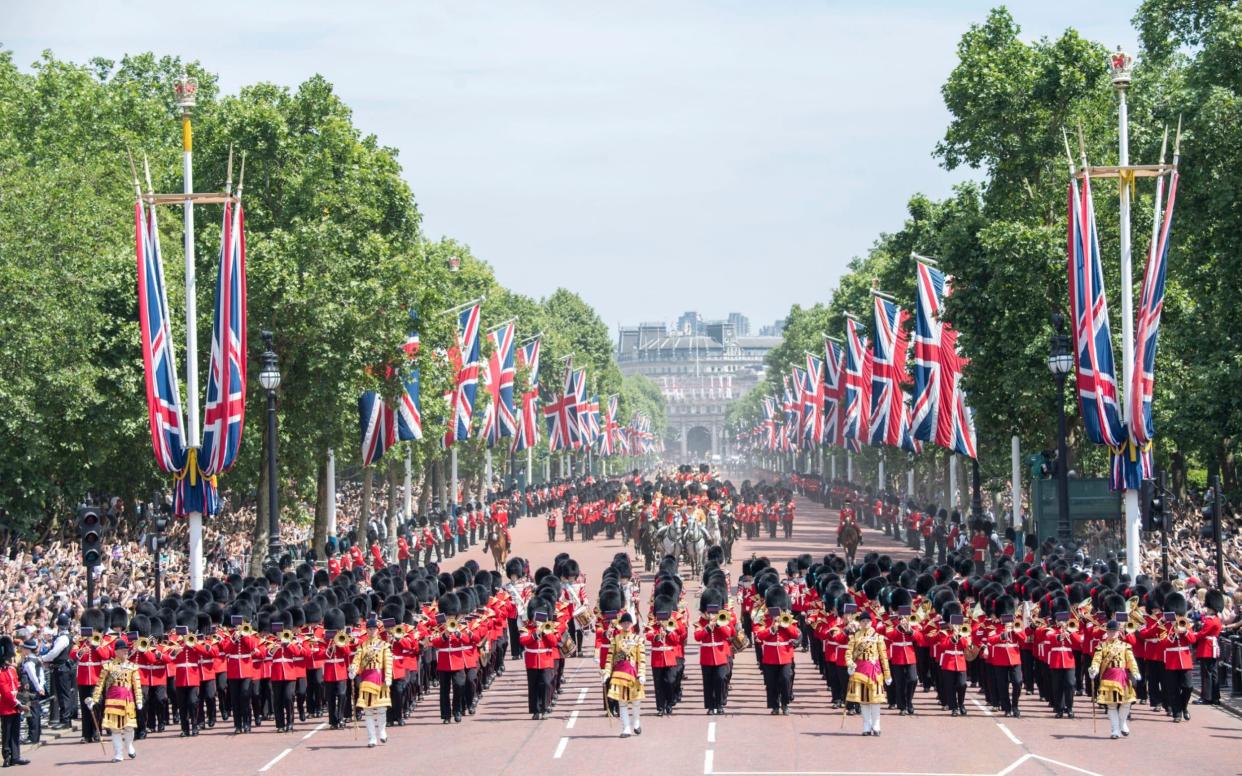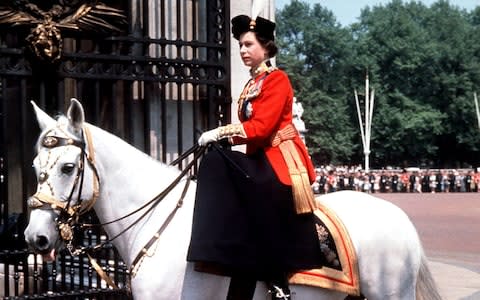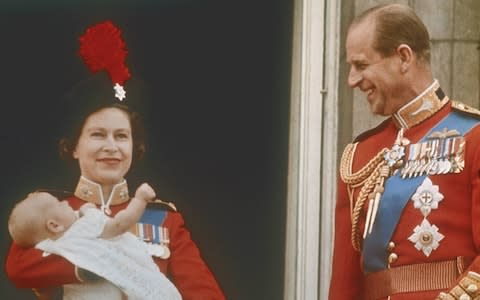Trooping the Colour 2019: How the November weather brought about the Queen's summer birthday celebrations

Trooping the Colour, the official celebration of the Queen's birthday, is fast approaching, with Union Jack-clad merrymakers set to gather at The Mall in London to catch a glimpse of the Royal family.
The colourful display of flag-flying and pageantry takes place every summer and is attended by the Queen and her family. This year, the world will hope to see the Duke and Duchess of Sussex cradling their baby boy on the balcony of Buckingham Palace.
Otherwise known as the Queen's Birthday Parade, the event marks the sovereign's birthday. However, as Elizabeth II wasn't born in June, why do the Royal family celebrate her birth on the second Saturday of this month? Here is everything you need to know about the Queen's birthdays – both her real and official celebrations.
When is the Queen's birthday and Trooping the Colour 2019?
The Queen was born on April 21 1926; this year she turned 93. She usually celebrates this day in private with her family, although every year on April 21 there are several gun salutes in London at midday.
The fanfare is mostly saved for her official birthday celebration, which is held annually on the second Saturday of June. This celebration, referred to as Trooping the Colour, is a moveable feast – in 2019 it will be celebrated on June 8.
The annual summer military parade dates back to 1758, when thousands of people headed to the capital to observe the presiding monarch's official birthday celebrations.
What happens during Trooping the Colour?
During the parade, the Queen inspects soldiers from the Household Division. The inspection takes place on Horse Guards Parade behind Whitehall.
Each year a different regiment's Colours are trooped; in 2019, the spotlight will be on the 1st Battalion Grenadier Guards. This infantry regiment dates back to 1656, when it was formed to protect Charles II. Since then, the soldiers have fought in both the First and Second World Wars and, in more recent history, were deployed in Northern Ireland, Palestine, Afghanistan and Iraq.
The colourful display of pageantry features 1,400 officers and men, 200 horses and 400 musicians from 10 bands. The Queen always attends and takes the salute.
The Trooping of the Colour begins when the Queen leaves Buckingham Palace in a carriage, accompanied by a Sovereign's escort from the Household Cavalry Mounted Regiment, at approximately 10.45am.
She used to arrive riding side-saddle on a horse, wearing the uniform of the regiment begin trooped; however, since 1987, she has arrived by carriage.

She arrives at Horse Guards Parade to take the Royal salute from the officers and men on parade at 11am and then carries out an inspection of the troops who wear the ceremonial uniform of red tunics and bearskin hats.
The regiment's Colour (which is essentially their flag) is then carried down the ranks, following music from the marching bands.
Once the soldiers have marched past the Queen, she returns to Buckingham Palace at 12.20pm for a second salute.
A 41-gun salute is conducted in Green Park at approximately 12.52pm and the Queen is then joined by members of the Royal family on the balcony of the palace.
The Queen has taken the salute at every parade since her accession to the throne 67 years ago, except in 1955 when there was a national rail strike.
The Trooping the Colour flypast
Each year, Trooping the Colour attendees are left enchanted by the magnificent Royal Air Force flypast, as the Queen watches on alongside the Royal family.
At approximately 1pm on Saturday, a selection of aircraft will take to the sky in celebration of the Queen's official birthday.
While the exact planes and route are still to be officially confirmed, The Red Arrows, Tornado GR4s, Supermarine Spitfire, Hawker Hurricane, Avro Lancaster and Voyager were among those in last year's flypast.
What does 'Trooping the Colour' mean?
Acting as the personal bodyguards of the Queen, the Guards, part of the Household Division, are one of the oldest regiments of the British Army. They have been a constant fixture of the monarchy since the English Civil War ended in 1660.
'Colours' were the regimental flags of the British Army which displayed the uniform colours and insignia of different units. They were designed to help troops quickly identify their unit on the battlefield and avoid confusion.
In order for troops to be familiar with their regiment's Colours, it was necessary to display them regularly. As a result, young officers would march in-between the ranks of troops who stood in lines holding their Colours high. This is the origin of the term 'trooping'.
Why does the Queen have two birthdays?
Although the trooping of the Colours was first performed for military purposes under King Charles II in the 1600s, the parade became an official part of the British calendar a century later.
It is a tradition that was started by George II in 1748 and it owes its origins to the ageless problem of the British weather.
George was born in November and felt the weather would be too cold at that time of year for a birthday parade. King George decided to combine his birthday celebration with an annual military parade.
It is a tradition that has continued to this day. All British sovereigns are given the option of having an 'official' birthday and, because the Queen's real birthday is on April 21, she chose to to hold her celebration in June each year.

When she first ascended the throne, the Queen chose to hold her Official Birthday on the second Thursday of June; this was the day her father, King George VI, also chose to celebrate his official birthday.
However, in 1959 the Queen decided her official birthday should be held two days later, on the second Saturday of June, instead – and it has been ever since.
How can I watch it?
The Queen's Birthday Parade is televised live by the BBC every year.
While it is possible to watch the parade up close, it is unfortunately too late to get tickets now. The ballot for seated tickets around the Horse Guards closed at the beginning of March, while standing tickets sold out shortly after.
However, as the Queen and other members of the Royal family travel to and from Buckingham Palace in carriages, there is ample opportunity to see her for anyone standing on The Mall.
The public were also able to admire the spectacle during the two rehearsals. The first, known as The Major General's Review, took place on Saturday May 25; the second, The Colonel’s Review, took place on Saturday June 1. Both could be seen from The Mall or the edge of St James's Park.

 Yahoo News
Yahoo News 
